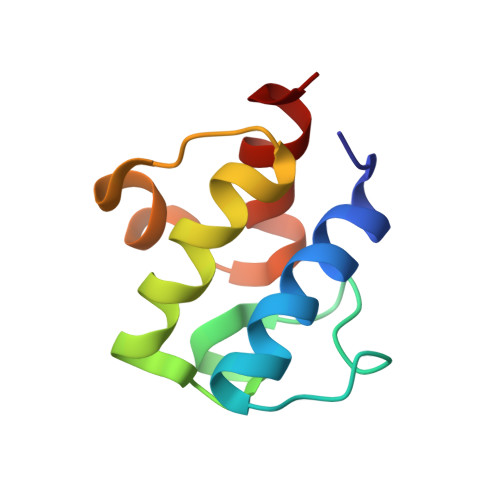Recognition of intermediate functionality by acyl carrier protein over a complete cycle of fatty acid biosynthesis
Ploskon, E., Arthur, C.J., Kanari, A.L., Wattana-amorn, P., Williams, C., Crosby, J., Simpson, T.J., Willis, C.L., Crump, M.P.(2010) Chem Biol 17: 776-785
- PubMed: 20659690
- DOI: https://doi.org/10.1016/j.chembiol.2010.05.024
- Primary Citation of Related Structures:
2KOO, 2KOP, 2KOQ, 2KOR, 2KOS - PubMed Abstract:
It remains unclear whether in a bacterial fatty acid synthase (FAS) acyl chain transfer is a programmed or diffusion controlled and random action. Acyl carrier protein (ACP), which delivers all intermediates and interacts with all synthase enzymes, is the key player in this process. High-resolution structures of intermediates covalently bound to an ACP representing each step in fatty acid biosynthesis have been solved by solution NMR. These include hexanoyl-, 3-oxooctanyl-, 3R-hydroxyoctanoyl-, 2-octenoyl-, and octanoyl-ACP from Streptomyces coelicolor FAS. The high-resolution structures reveal that the ACP adopts a unique conformation for each intermediate driven by changes in the internal fatty acid binding pocket. The binding of each intermediate shows conserved structural features that may ensure effective molecular recognition over subsequent rounds of fatty acid biosynthesis.
- School of Chemistry, University of Bristol, Cantock's Close, Bristol BS81TS, United Kingdom.
Organizational Affiliation:

















